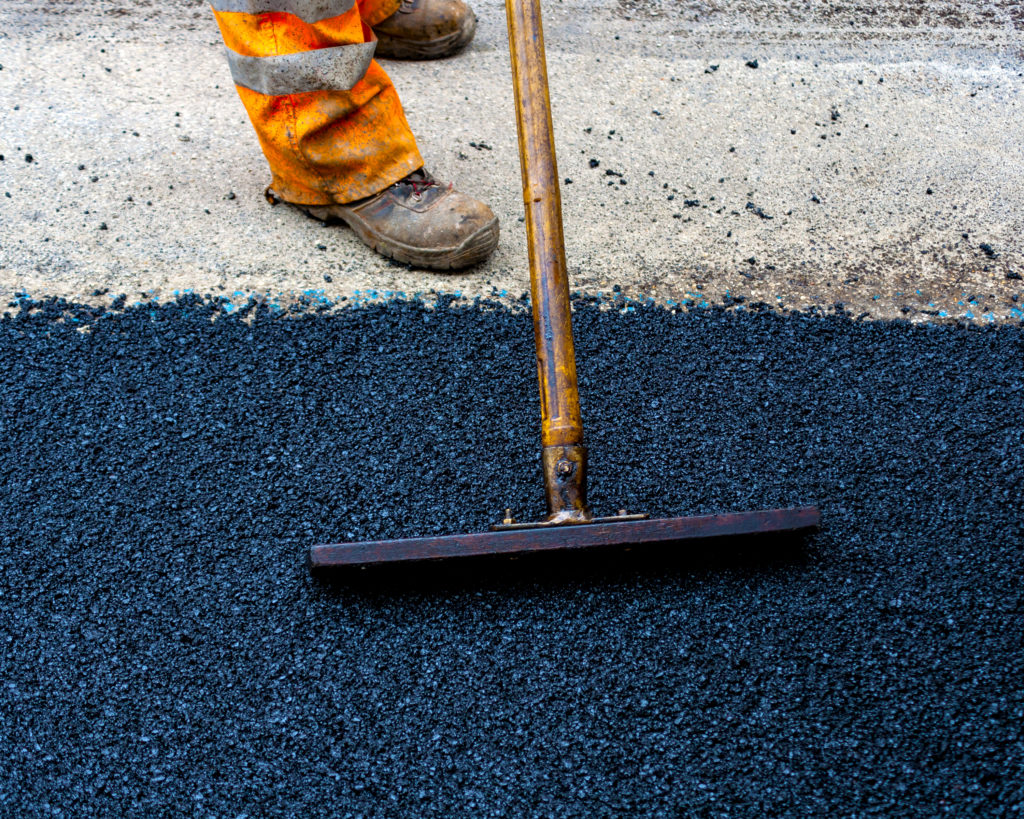Transform Your Property's Landscape with Hot Mix Asphalt Paving Excellence
Transform Your Property's Landscape with Hot Mix Asphalt Paving Excellence
Blog Article
Opening the Secrets of Hot Mix Asphalt Technology
Discovering the depths of hot mix asphalt innovation uncovers a world where careful processes and exact formulations converge to shape our roads and framework. The blend of accumulations, binders, and fillers isn't just a building and construction job however a critical orchestration of resilience and performance. As we peer right into the detailed dance of elements, a tapestry of resilience and sustainability unravels. What lies below this surface area of asphaltic proficiency, and what tricks wait to be revealed in the realm of paving technologies?
Relevance of Hot Mix Asphalt
Hot Mix Asphalt plays an important function in modern framework development due to its toughness and cost-effectiveness. As the most generally made use of paving product for roadways, freeways, and parking area, Hot Mix Asphalt offers a series of advantages that add to its significance in construction projects. One vital advantage is its ability to hold up against heavy traffic lots and extreme weather, providing a reliable and lasting surface for transportation networks. Furthermore, Hot Mix Asphalt is economical in both preliminary building and long-lasting upkeep, making it a favored choice for several facilities tasks.
The resilience of Warm Mix Asphalt stems from its composition, which consists of aggregates, binder, and filler materials that are very carefully chosen and blended to satisfy certain performance needs. Overall, the relevance of Warm Mix Asphalt in infrastructure development can not be downplayed, as it continues to be a cornerstone of modern building and construction practices.
Components of Asphalt Mixes
The structure of asphalt blends is composed of carefully selected aggregates, binder, and filler materials that are vital for attaining specific performance demands. Aggregates are the main part of asphalt mixes, supplying toughness and security. The binder, normally asphalt or asphalt concrete, holds the accumulations with each other and gives flexibility and toughness to the mix.
The mix and percentage of these parts play a significant role in identifying the high quality and performance of the asphalt mix. Engineers thoroughly create the mix to meet particular requirements, considering elements like traffic volume, climate problems, and sidewalk life expectancy. Appropriate choice and balancing of aggregates, binder, and fillers are essential for creating long lasting, lasting asphalt sidewalks.
Combining and Manufacturing Strategies

When the aggregates are chosen, the binder, commonly asphalt concrete, look at this site is contributed to bind the products with each other. The binder's high quality and amount significantly affect the mix's flexibility, resistance, and strength to environmental elements. Additionally, fillers like hydrated lime or Rose city concrete may be incorporated to enhance specific features of the asphalt mix, such as its workability or dampness resistance.
During production, the accumulations and binder are heated, generally in between 250-325 ° F(121-163 ° C ), to assist in mixing and ensure correct layer of the aggregates. The mixing procedure has to be complete to accomplish a homogeneous combination that advertises the desired efficiency attributes of the asphalt. Various techniques, such as set mixing or drum blending, are utilized to achieve regular and top notch asphalt blends for building projects.
Factors Influencing Asphalt Performance
Elements affecting asphalt efficiency encompass a variety of variables that influence the durability, durability, and total quality of asphalt pavements. One crucial variable is the top quality of products made use of in the you could check here asphalt mix.

Ecological conditions likewise affect asphalt performance. Temperature level variations, dampness seepage, and web traffic lots can all affect the architectural integrity of the sidewalk. Design considerations, such as sidewalk thickness and drain, are essential in making sure the lasting performance of the asphalt sidewalk. By carefully taking into consideration these designers, service providers and elements can maximize asphalt efficiency and enhance the service life of pavements.
Sustainable Practices in Asphalt Technology

WMA enables for the manufacturing and placement of asphalt mixes at reduced temperatures contrasted to conventional hot-mix asphalt, resulting in lowered power usage and greenhouse gas emissions. The use of permeable asphalt mixes can help alleviate stormwater runoff problems by permitting water to penetrate via the pavement and right into the ground, promoting natural water filtration and recharge processes.
Verdict
To conclude, hot mix asphalt innovation plays a critical function in modern-day framework development as a result of its sturdiness and cost-effectiveness. By thoroughly balancing components, using appropriate blending techniques, and considering different variables, designers can produce high-quality asphalt mixes that stand up to rush hour lots and rough climate condition. Embracing lasting techniques, such as utilizing recycled materials and warm-mix innovations, further enhances the ecological kindness of asphalt innovation.
Mixing and production methods in hot mix asphalt technology entail the exact combination and processing of accumulations, binder, and fillers to produce a resilient and high-performance asphalt mix.Variables affecting asphalt performance incorporate a variety of variables that impact the resilience, long life, and general quality of asphalt sidewalks. Sustainable practices in asphalt modern technology include numerous efforts aimed at lowering the environmental influence of asphalt manufacturing and paving processes. By incorporating recovered asphalt pavement (RAP) and recycled asphalt tiles (RAS) into brand-new asphalt mixes, the sector can considerably reduce the usage of raw materials and energy, while additionally reducing land fill waste.
WMA enables for the manufacturing and placement of asphalt blends at lower temperature levels contrasted to conventional hot-mix asphalt, resulting in lowered energy intake and greenhouse gas emissions.
Report this page